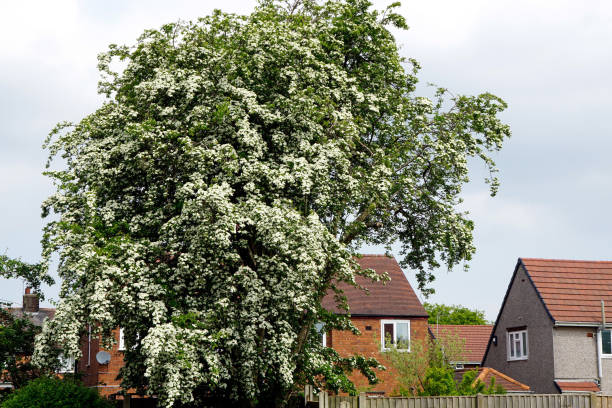The UK is home to many pleached trees. They are great for formal and small gardens, as they take up little space. They require little maintenance, as they only need to be pruned once or twice per year.
Pleached Trees: Popular Species
We have a large range of UK-pleached trees in stock, and we can deliver them quickly.
Use pleached trees to create a small garden.
Pleated trees are beautiful because they produce stunning visual effects while taking up little space on the ground. They are ideal for small gardens or formal gardens where they can create structure and direct the eye.
Garden designers have used pleached trees for at least four hundred years. It is not uncommon to find an avenue of pleached trees on the grounds of stately homes.
It’s a great pleasure to announce that these trees are enjoying a revival in the 21st Century, and not just because they go well with the modern garden design.
Their slimline crowns and, consequently, smaller roots are perfect for bringing carbon-busting trees to today’s smaller garden.
These trees can be used to raise your fences, improving privacy and security. The stem height of 21st-century pleached trees is 180cm, which is the same as a standard fence.
The Eden Project, Cornwall, has created a visually appealing path by planting white-flowered globe alliums under pleached Hornbeam trees.
What are the best types of pleached trees for small gardens?
The two broadest categories of pleached trees are Deciduous and evergreen.
Evergreen Pleached Trees
Evergreen Pleached Trees are ideal for small gardens as they take up little space and require minimal maintenance. They also provide year-round greenery, with glossy leaves that can be welcomed in winter.
The classic species of Pleached Evergreens include Photinia Red Robin, Holm oak, and Cherry Laurel.
Pleached Cherry Laurel
The dense growth habit of the pleached cherry laurel tree makes it a robust plant. It has large glossy leaves and is commonly used for hedging. It is relatively easy to trim and train, but you may need to do more than one cutting a year.
Pleached Photinia (Photinia x fraseri)
The Photinia Red Robin Pleached Trees are a good doer. A beautiful tree with bright red leaves that will add a splash to your garden. It creates warmth and vibrancy and complements cedar fences.
Pleached Holm Oak
Quercus Ilex, or the Pleached Holm Oak Tree, is an evergreen tree species. The Pleached Holm Oak Trees can be found in both formal gardens and landscapes. They are beautiful and functional.
Deciduous Pleached Trees
Deciduous Pleched Trees are also a good choice for small gardens. They provide shade during the summer.
Our native Pleached Hornbeam and Pleached Liquid Ambar are excellent alternatives.
Pleached Hornbeam (Carpinus betulus)
The pleached hornbeam tree is a native of the UK. It is frost-resistant and looks similar to green beech. It tolerates clipping well and provides a soft, mottled shadow in the summer.
Pleached Liquidambar Sweet Gum
Prices start at PS 395.00. SHOP PLEACHED LIQUIDAMBAR SWEET GUMPleached Liquid Ambar (Liquidambar styraciflua)
The Pleached Liquidambar Sweet Gum Trees can be used to create architectural interest and screen your garden. Bright green leaves that turn to shades of orange, yellow, and red during the fall.
Choose the right tree for your small garden.
There are several things to consider when choosing pleached trees in a small yard. The size of the trees should be considered first. Pleached trees are pruned at different heights and sizes, so you should choose a tree that is suitable for your garden.
The second thing to consider is the style of pleaching. Preaching comes in many forms. From pleached trees that have a single arch to pleached trees with multiple pleats in an “X,” there are many options. The different teaching styles will require different amounts and types of training. It would be best if you chose a style that suits your garden.
It’s also important to select pleached trees appropriate for the climate where they will be planted. Pleated trees need different amounts of water and sunlight. It’s therefore important to choose the right trees for the environment in which they are grown.



